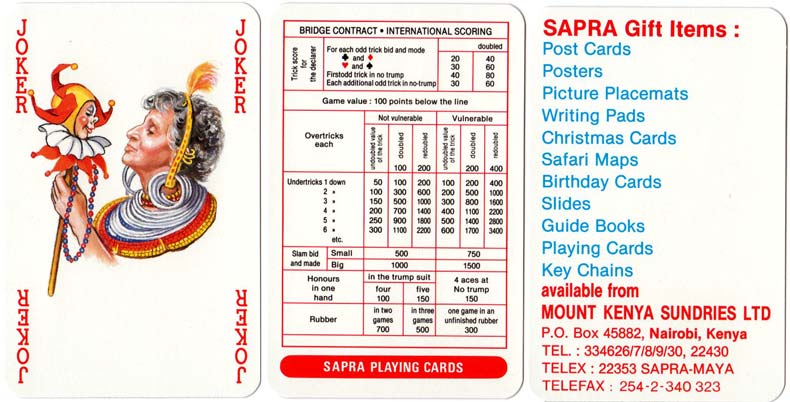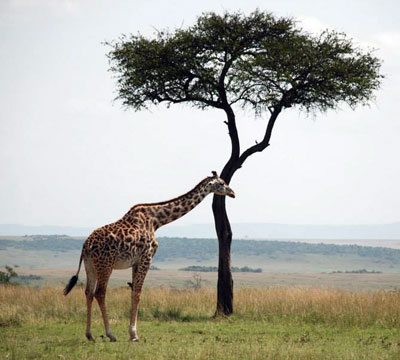Kenya Tribes Playing Cards
“Kenya Tribus” playing cards published by Sapra, Mount Kenya Sundries Ltd, Nairobi, 1991
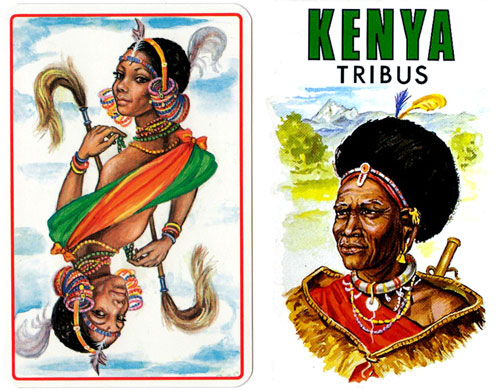
“Kenya Tribus” Playing Cards
“Kenya Tribus” beautifully illustrated playing cards published by Sapra, Mount Kenya Sundries Ltd, Nairobi, 1991.
Kenya has a very diverse population that includes most major ethnic, racial and linguistic groups found in Africa. Each card features a full-length colour illustration of African people including: warriors, dancers, musicians, young girls, men and women, witch doctors and drummers. There are about 42 different tribes in Kenya, making more than 42 ethnic communities each having its own traditional practices and symbols. This pack of cards contains a total of 55 illustrations.
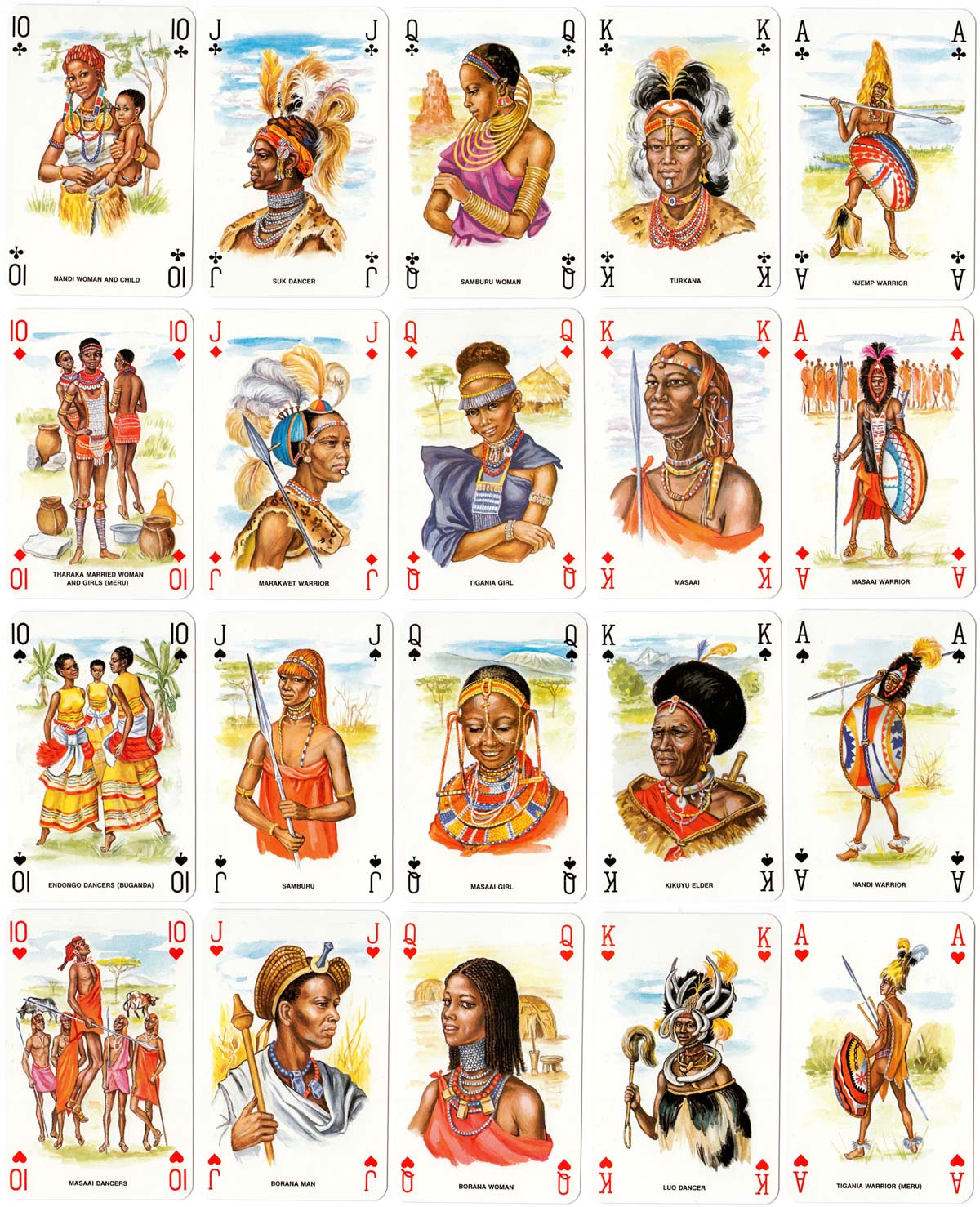
Above: “Kenya Tribus” playing cards published by Sapra, Mount Kenya Sundries Ltd, Nairobi, printed by Grimaud, 1991. Images courtesy Rex Pitts.
Variation
These have the same artwork as “Kenya Tribus”, but without the background to the images, and different jokers. See the box►

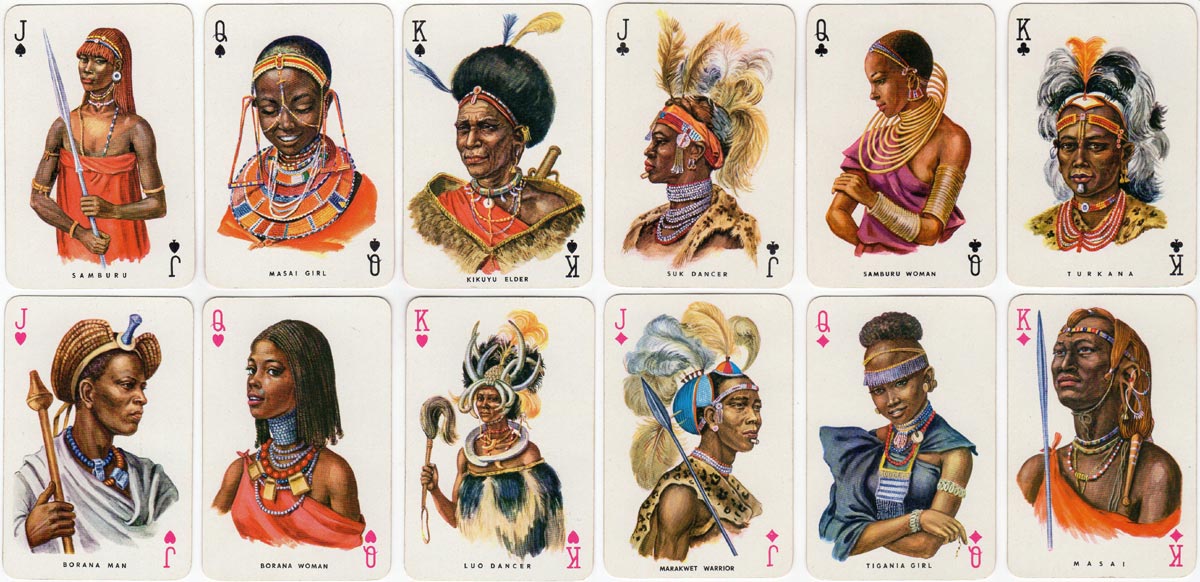
Above: a dual version of a similar deck published by Modiano, from their pack entitled Tribù Africane, first published as early as 1970. Image courtesy Matt Probert.
Reference
http://a.trionfi.eu/WWPCM/decks02/d00836/d00836.htm
By Rex Pitts (1940-2021)
United Kingdom • Member since January 30, 2009
Rex's main interest was in card games, because, he said, they were cheap and easy to get hold of in his early days of collecting. He is well known for his extensive knowledge of Pepys games and his book is on the bookshelves of many.
His other interest was non-standard playing cards. He also had collections of sheet music, music CDs, models of London buses, London Transport timetables and maps and other objects that intrigued him.
Rex had a chequered career at school. He was expelled twice, on one occasion for smoking! Despite this he trained as a radio engineer and worked for the BBC in the World Service.
Later he moved into sales and worked for a firm that made all kinds of packaging, a job he enjoyed until his retirement. He became an expert on boxes and would always investigate those that held his cards. He could always recognize a box made for Pepys, which were the same as those of Alf Cooke’s Universal Playing Card Company, who printed the card games. This interest changed into an ability to make and mend boxes, which he did with great dexterity. He loved this kind of handicraft work.
His dexterity of hand and eye soon led to his making card games of his own design. He spent hours and hours carefully cutting them out and colouring them by hand.

Related Articles

Birds of Southern Africa
Sapra Studio Original playing cards beautifully illustrated with birds of Southern Africa.
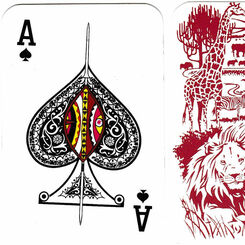
Karata playing cards
Karata playing cards produced in Nairobi, c. 1970.

Irish Legendary
Irish Legendary deck featuring figures in the Legends of Ireland, designed by Rachel Arbuckle, 1990....
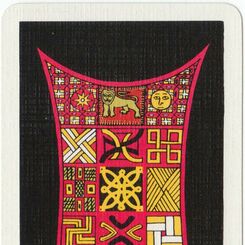
Ethiopian
Ethiopian playing cards designed for the Ethiopian Tourist Organization by Afewerk Teklé.

Sapra Studio Original
Sapra Studio Original playing cards featuring wild animals of S Africa, 1999.
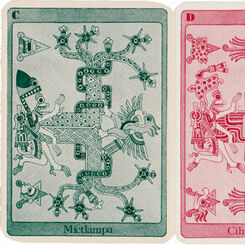
Tonalamatl
Baraja Tonalamatl Mexican Aztec playing cards based on the prehispanic Codex Borgia manuscript.
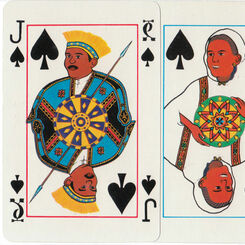
Ethiopian Air Lines
Ethiopian Air Lines playing cards designed by Melles Habtezghi with courts wearing regional costumes...
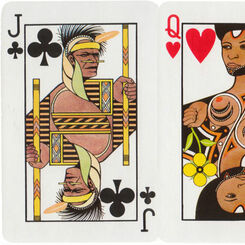
Papua New Guinea
Souvenir playing cards from the culturally diverse southwestern Pacific island of Papua New Guinea. ...
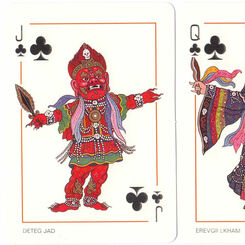
Mongolian Mask Dancing
Mongolian Religious Mask Dancing playing cards, c.2010

Trinidad Carnival Playing Cards
“Allfours Carnival Playing Cards” designed by Gabby Woodham, Trinidad, 1995
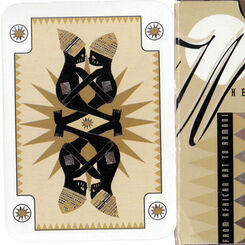
Sandton City
African tribal mask playing cards for Sandton City, Johannesburg.
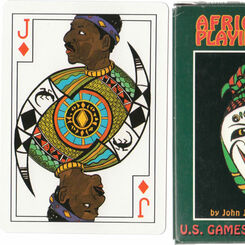
African Art
“African Art” playing cards by John J. Beckvermit III, 1994.
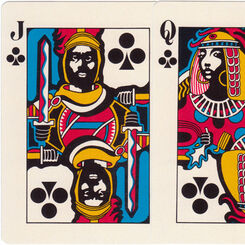
Sheba by Omega Concepts Ltd
Sheba playing cards illustrated by Brent Bailer and published by Omega Concepts Ltd.
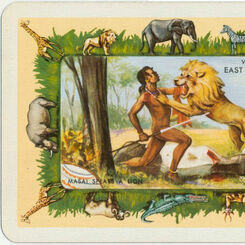
East African Playing Cards
East African Playing Cards by Heraclio Fournier S.A., 1957.
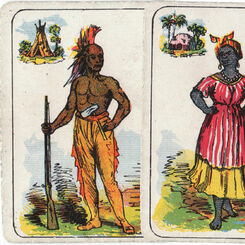
Game of Nations
The “Game of Nations” depicting caricatures of traditional costumes manufactured by McLoughlin Broth...
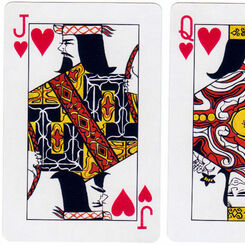
Ainu culture
A terrific deck of cards made by Nintendo c.1979 with original designs on every card showing the Ain...

Iceland Mythological Playing Cards
Iceland Mythological Playing Cards designed by Sigurlinna Pétursson, 1958
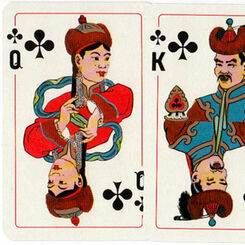
Mongol Playing Cards
Mongol Playing Cards with courts in traditional costume.
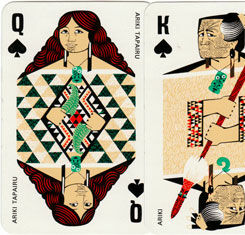
Maori
Maori themed playing cards from New Zealand depicting Maori Kings, Queens and Chiefs
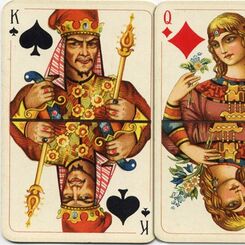
Slavonic
Originally published as “Slavonic Cards No.501” by The Colour Printing Plant, St. Petersburg in 1928...
Most Popular
Our top articles from the past 60 days


